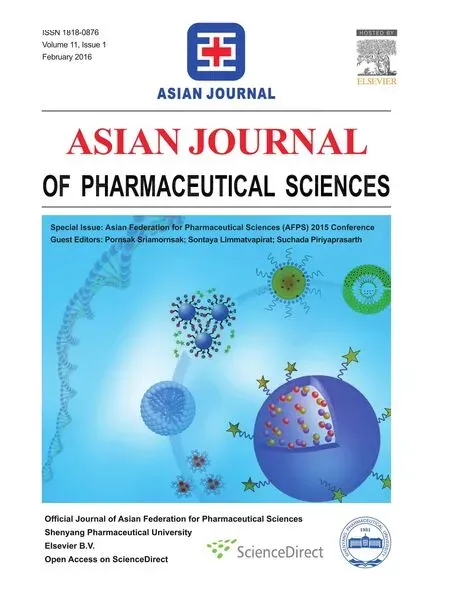Pharmacy residency system in Gunma University Hospital
Kyoko OyshiTkuy Arki,Koujirou Ymmoto
aDepartment of Pharmacy,Gunma University Hospital,3-39-15 Showa-machi,Maebashi 371-8511,Japan
bDepartment of Clinical Pharmacology,Gunma University Graduate School of Medicine,3-39-22 Showa-machi, Maebashi 371-8511,Japan
Pharmacy residency system in Gunma University Hospital
Asami Matsushitaa,*,Daisuke Naganob,Mikako Shimonea, Kyoko Obayashia,Takuya Arakia,b,Koujirou Yamamotoa,b
aDepartment of Pharmacy,Gunma University Hospital,3-39-15 Showa-machi,Maebashi 371-8511,Japan
bDepartment of Clinical Pharmacology,Gunma University Graduate School of Medicine,3-39-22 Showa-machi, Maebashi 371-8511,Japan
A R T I C L E I N F O
Article history:
Available online 25 November 2015
Pharmacy residency system
Postgraduate pharmaceutical
program
Teaching program
Japanese pharmacy
Recently,undergraduate and postgraduate pharmaceutical education systems have been changing greatly in Japan.In 2006, undergraduate pharmacist program was changed from 4 years course to 6 years course to train higher-quality pharmacists who can deal with the changes in the progression of medical technology and meet social demands for medication safety[1]. As a postgraduate training system,pharmacy residency system was started in several hospital in 2002,and around 35 hospitals have pharmacy residency system at 2015[2].Gunma University Hospital also began pharmacy residency system at April 2013,and 11 pharmacists are in residency training now.
The residency program in Gunma University consists of 2 years course.After 9 months general training for learning fundamental knowledge and skills required for pharmacist to deal with medicines properly at pharmacy,training at ward to learn detail of pharmaceutical therapy,skill of communication with medical staff and patients,and management of medicines at wards starts.General training includes dispensing of internal drugs and injectable drugs at dispensing room,preparation of anti-cancer injectable drugs at chemotherapy center for outpatients,drug formulating at manufacturing room,analysis of drug concentration in blood at clinical laboratory,and handling of drug information at drug information center.In addition to those practical training,case report study,lecture,research activity and international exchange are conducted.After daily work,small group study with advising pharmacist for training of prescription assessment is conducted every week. As an international exchange,residents are given some chance to introduce Japanese hospital pharmacists and their work to students and pharmacists from foreign countries,and talk with them about work of pharmacists in foreign countries.Our training program gives residents many skills and knowledge requiredfor pharmacist in early state.Furthermore,although many Japanese pharmacists had less chance to hear about work and activity of foreign pharmacist directly from foreign pharmacists because of less chance to contact with them,resident pharmacists are given chance to contact with foreign pharmacists and learn activity of foreign pharmacists to rethink the activity of Japanese pharmacists with a global view.Learning the work and activities of pharmacists in foreign countries gives us many clues to improve our work and pharmaceutical treatment and develop something required for pharmacists of the next generation.We continue to get knowledge and skills to make pharmaceutical therapy more safety and effective.We will be a pharmacist who can resolve clinical problems via scientifc approach and worldwide thinking.

Fig.1–Resident training program in Gunma University Hospital.
R E F E R E N C E S
[1]Tomoko W,Yusaku O,Toshinori Y,et al.The case for shift in pharmacist’s activities and pharmacy education.Yakugaku Zasshi 2005;125:283–292.
[2]Atsushi W,Tomoka Y,Shouichi K,et al.Establishment of a resident system for pharmacist at Fukuoka University Hospital and its assessment.Jpn J Pharm Health Care Sci 2008;34:853–859.
*E-mail address:matsushita.a@gunma-u.ac.jp.
Peer review under responsibility of Shenyang Pharmaceutical University.
http://dx.doi.org/10.1016/j.ajps.2015.11.029
1818-0876/?2016 Production and hosting by Elsevier B.V.on behalf of Shenyang Pharmaceutical University.This is an open access article under the CC BY-NC-ND license(http://creativecommons.org/licenses/by-nc-nd/4.0/).
 Asian Journal of Pharmacentical Sciences2016年1期
Asian Journal of Pharmacentical Sciences2016年1期
- Asian Journal of Pharmacentical Sciences的其它文章
- Determination of the antidepressant effect of mirtazapine augmented with caffeine using Swiss-albino mice
- Photosafety testing of dermally-applied chemicals based on photochemical and cassette-dosing pharmacokinetic data
- Biopharmaceutics classifcation system(BCS)-based biowaiver for immediate release solid oral dosage forms of moxifoxacin hydrochloride (Moxifox GPO)manufactured by the Government Pharmaceutical Organization(GPO)
- Bioequivalence study of abacavir/lamivudine (600/300-mg)tablets in healthy Thai volunteers under fasting conditions
- Evaluation of cytotoxic and infammatory properties of clove oil microemulsion in mice
- Analytical method development of pregabalin and related substances in extended release tablets containing polyethylene oxide
